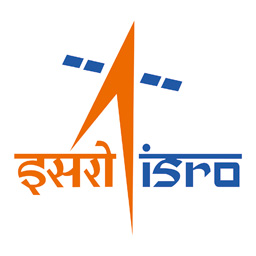
H3 QZS-5
1766379600 (22-Dec-2025 05:00)
[ December 22 / Window opens at 11:10 a.m. JST / 0210 UTC on Dec. 22 (9:10 p.m. EST on Dec. 21)]
[map] Yoshinobu Launch Complex, JAXA Tanegashima Space Center
An H3 launch vehicle, a rocket developed through a partnership between Mitsubishi Heavy Industries and JAXA (Japan Aerospace Exploration Agency), will launch the Michibiki No. 5, Quasi-Zenith Satellite System (QZS-5). This will be the eighth launch of an H3 rocket. Delayed from Dec. 6/7 “due to the occurrence of a need to check onboard equipment on the second stage.” Delayed from Dec. 16/17 due to ground systems issue that caused an abort in the final minute of the count. Updated: December 19
 LVM3-M6 BlueBird Block 2
LVM3-M6 BlueBird Block 21766466000 (23-Dec-2025 05:00)
[ December 23/24 / 8:54 a.m. local time / 0324 UTC on Dec. 24 (10:24 p.m. EST on Dec. 23)]
[map] Satish Dhawan Space Centre (SDSC SHAR), Sriharikota, India
[*] [vidz] A Launch Vehicle Mark-3 (LVM3) rocket will launch the BlueBird Block 2 mission for AST SpaceMobile. The mission is referred to as BlueBird 6 by the customer and is billed as the first of AST SpaceMobile’s next-generation satellites. The satellite has a phased array antenna that is nearly 2,400 square feet. Updated: December 20 [#]
 Falcon 9 CSG-3
Falcon 9 CSG-31766811600 (27-Dec-2025 05:00)
[ December 27/28 / 6:09 p.m. PST (9:09 p.m. EST / 0209 UTC)]
[map] SLC-4E, Vandenberg Space Force Base, California
[*] [vidz] A SpaceX Falcon 9 rocket will launch the third satellite in the Cosmo-SkyMed Second Generation series on behalf of the Italian Space Agency and the Italian Ministry of Defence. The satellite will operate in a Sun-synchronous orbit at 620 km (385 mi) in altitude an inclination of 97.8 degrees. These satellites are designed to have a dual Earth observation purpose, serving both civil and military applications. Its planned end of life date is in December 2032. Nearly 8.5 minutes after liftoff, the Falcon 9 first stage booster, tail number 1081, flying for a 21st time, will return to land for a touchdown at Landing Zone 4 at Vandenberg Space Force Base. Updated: December 17 [#]
 Vulcan Centaur Dream Chaser 1
Vulcan Centaur Dream Chaser 11767157200 (31-Dec-2025 05:00)
[ TBD 2026 / TBD]
[map] SLC-41, Cape Canaveral Space Force Station, Florida
[*] [vidz] A United Launch Alliance Vulcan Centaur rocket will launch on its second demonstration flight with Sierra Spaces Dream Chaser cargo vehicle for the International Space Station. The Dream Chaser is a lifting body resupply spacecraft that will launch on top of a rocket and land on a runway. This will be the Dream Chasers first flight to space. The Vulcan Centaur rocket will fly in the VC4L configuration with four GEM-63XL solid rocket boosters, a long-length payload fairing, and two RL10 engines on the Centaur upper stage. Delayed from August 2022, December 2023, January 2024, April 2024 and September 2024. Delayed from 2025. Updated: September 16 [#]
H3 QZS-7
1769922000 (01-Feb-2026 05:00)
[ NET February 1 / 4:30 p.m. JST (2:30 a.m. EST / 0730 UTC)]
[map] Yoshinobu Launch Complex, JAXA Tanegashima Space Center
An H3 launch vehicle, a rocket developed through a partnership between Mitsubishi Heavy Industries and JAXA (Japan Aerospace Exploration Agency), will launch the Michibiki No. 7, Quasi-Zenith Satellite System (QZS-7). This will be the ninth launch of an H3 rocket. Updated: December 01
Space Launch System Artemis 2
1770267600 (05-Feb-2026 05:00)
[ NET February 5 / TBD]
[map] Launch Complex 39B, Kennedy Space Center
NASA’s Space Launch System rocket will launch an Orion spacecraft on the Artemis 2 mission, the first crewed flight of the program. NASA astronauts Reid Wiseman, Victor Glover and Christina Koch along with Canadian Space Agency astronaut Jeremy Hansen will perform a lunar flyby during a roughly 10-day mission that will see their capsule, ‘Integrity’, splash down in the Pacific Ocean. Updated: December 01
 Falcon 9 Crew-12
Falcon 9 Crew-121771131600 (15-Feb-2026 05:00)
[ NET February 15 / TBD]
[map] SLC-40, Cape Canaveral Space Force Station, Florida
[*] [vidz] A SpaceX Falcon 9 rocket will launch a four-person crew to the International Space Station on the SpaceX Crew-12 flight. NASA astronaut Jessica Meir will command the mission alongside pilot and fellow NASA astronaut, Jack Hathaway. They are joined by mission specialists Sophie Adenot, a European Space Agency (ESA) astronaut and Andrey Fedyaev, a Roscosmos cosmonaut. This will be the second flight for Meir and Fedyaev and the first flight for both Hathaway and Adenot. The quartet will conduct a long-duration mission onboard the ISS. Following stage separation, the first stage booster supporting this mission will return to a landing site adjacent to the launch pad at Space Launch Complex 40 at Cape Canaveral Space Force Station. Updated: December 19 [#]
Falcon Heavy Dragonfly
1783227600 (05-Jul-2026 05:00)
[ NET July 5, 2028 / TBD]
[map] Launch Complex 39A, Kennedy Space Center, Florida
A SpaceX Falcon Heavy rocket will launch NASA’s Dragonfly mission, which consists of a rotorcraft designed by the Johns Hopkins Applied Physics Laboratory (APL) that will explore Saturn’s icy moon, Titan. The mission was originally selected in 2019 and went through multiple plan iterations across fiscal years 2020 through 2022. It passed its Preliminary Design Review in March 2023 and then its Critical Design Review in April 2025. The mission has a total lifecycle cost of $3.35 billion, of which, $256.6 million was awarded to SpaceX to provide launch services and other mission related costs. The 20-day launch window opens on July 5, 2028. Updated: April 25
Hanbit-Nano Spaceward
1797829200 (21-Dec-2026 05:00)
[ NET December 21 / 3:45 p.m. BRT (1:45 p.m. EST / 1845 UTC)]
[map] Alcntara Launch Center, Brazil
Commercial company Innospace will launch its first Hanbit-Nano rocket on the Spaceward mission. The two-stage, 21.8-meter-tall (71.5 ft) rocket will carry eight payloads to an altitude of 300 km (186.4 mi) at an inclination of 40 degrees. Five satellites will be deployed and three experimental devices will remain fixed to the upper stage. The vehicle was inspected by the Korea AeroSpace Administration and the Brazilian Air Force. Delayed from Dec. 17 “to replace a component in the first-stage oxidizer feed system following an anomaly.” Delayed from Dec. 19 “due to technical checks” during the countdown. Updated: December 20